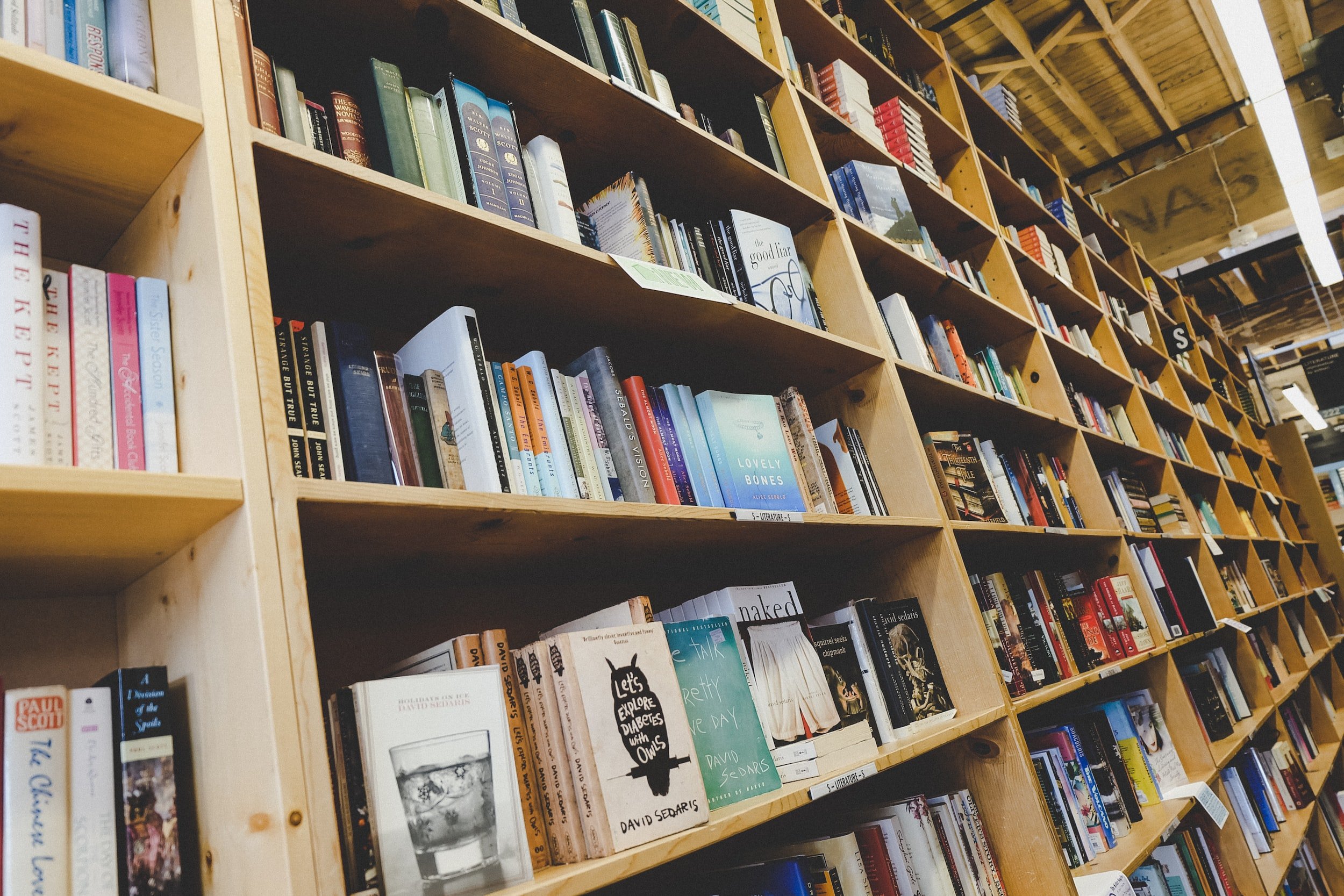How to Read Like a Writer
All great writers are good readers. But not all good readers are great writers.
Being an avid reader doesn’t always translate to having the chops to write a noteworthy book. And if that hits a little too close to home, don’t worry. We’ve got you covered. There’s a perfectly reasonable (and teachable) explanation why your copious amounts of reading haven’t enriched your writing.
It’s because you’re not reading like a writer.
Reading like a writer means questioning the choices behind an author’s work in order to understand how they created their story. Glimmer Train Press, a now-defunct literary journal, still features an enriching article on reading like a writer from former contributor Anthony DeCasper. He wrote that “Narrative design is the art of perception,” and to figure out another writer’s perception, we must break down their text into decisions. After all, anything written is simply the result of many editing choices: how the plot starts and ends, what twists occur, the order in which events occur, and more.
If you’ve ever felt moved by a particular piece or blown away by a book’s message, if you’ve ever loved a character’s arc and wondered how the author crafted it, then you’ve already taken the first step. Unlike reading for enjoyment or information, reading as a writer uncovers and helps you understand the design of a story’s framework. In this guide, we’ll share some helpful tips to get you reading like a writer.
Ask Questions
Be curious. You’re learning to build a story. You need to look at the details, and, more importantly, question why they’re there and how they’re used.
Let’s start with the questions before reading. First, determine the genre of the particular piece. Knowing the genre shapes your questions because each genre has specific writing conventions. For example, you wouldn't expect the pacing in a thriller to feel the same as the pacing in an epic fantasy.
Then, ask yourself if this piece or book is something that you would write. If it’s written in the same vein (i.e., humor) as what you want your book to capture, pay particular attention to the writing style and see if that is something that will work for you. When the author pushes a dramatic point or infuses the story with jokes, will those techniques work for you? Why or why not? How will your audience respond to them? In this spot, you can kill two birds with one stone by also assessing the target audience. Knowing who the author is speaking to will help to inform your judgment on their use of certain techniques.
The last question to ask before you begin reading is: what is the goal of this writing? What was the author’s purpose? You likely won’t have the right answer before you read, but try to guess anyway. Practice thinking about the author’s goal before you dive into their words.
Be a Detective
Reading like a writer is akin to playing detective. Detectives must train their inquisitive eye, and so must readers who write. Just as detectives seek to understand the mind of a killer, readers must strive to understand the inner workings of the author’s mind and see the world through their perspective. They must probe at every turn, hungrily analyzing each sentence to figure out how and why they work (or don’t).
There is no limit to the questions you can ask yourself while reading. If you’re just starting out, we recommend writing down your questions beforehand so that you can refer to them as you’re reading. Over time, these questions will come naturally. Below are just a few to get you started, and remember, asking the inverse of a question is always a great practice. In other words, thinking about what the author sacrificed or didn’t convey will enrich your decision-making process about how to pursue techniques in your own work.
If and when you get confused by something:
Why am I confused here? What is it about the writing that makes it unclear? What exactly am I confused about?
On a twist or turn of events you didn’t see coming:
How effective is this change? Why did the author choose to do this? How were they able to surprise me? What techniques did they use?
For each scene:
What is the author trying to accomplish? What are they telling me? What wasn’t shown and why?
On transitions:
How does the author move from one scene to another, from one chapter to another? Is it effective? Why or why not?
On POV:
Why did the author choose this specific perspective? What are we gaining from this POV, and what are we losing?
On language and word choice:
How impactful is the author’s language? Is it appropriate for the story?
On writing style:
What are the strengths of this writing style? Should I incorporate them into my own? What are the weaknesses? How can I avoid such mistakes?
For more questions you might ask about a particularly noteworthy sentence or passage, review The Write Practice’s wonderful article, “4 Steps to Read Like a Writer.” It discusses how to find what is powerful, why it’s powerful, and how it was written to achieve that power. Mike Bunn’s essay on how to read like a writer also goes deeper on the subject, includes insights from writing students, and provides an example of what this skill might look like.
Do Not Judge Worth
Because you’re asking yourself questions about the text and appraising its effectiveness, it may seem that you’re inherently judging a piece of literature to be good or bad. But reading like a writer does not mean you should judge literary merit; rather, you are reading to understand. Reading like a writer is about actively observing (i.e., questioning) how an author built their story.
There will be some assessment of whether the framework—meaning how the story was set up—was done well or not, as that is inevitable when you’re reading with a craft hat on, but overall judgment of a work’s caliber is not the main purpose of reading like a writer. You are reading to understand how the text was written and how the choices the author made came to construct the book’s formation, not if they are good or bad. That does not mean dissecting every tiny meaning of every person, place, or thing. So do your best to withhold judgment.
Practice Zooming In & Out
In some ways, reading like a writer is like being an editor, specifically a developmental editor or a book coach. Editing at that level considers an important skill: how to simultaneously consider both the big-picture aspects and small scene details as you read. Big-picture reading is important because it reveals patterns to the reader. You see how things coalesce. Looking at the big-picture aspects helps inform you of the author’s intent, or what themes are explored throughout. What major elements are driving the story?
But seeing the big picture alone isn’t enough. Small details and close-up elements are important too because they shape these big-picture ideas and themes. They show readers sensory details. They paint a clear picture and capture the reader. They tell the reader how those big-picture elements are made. Without the details of each scene or characterization, theme, plot, and setting would become near meaningless. They would carry little weight without the many layers and shades of meaning that smaller, specific features instill. In reading like a writer—or an editor—it is key to note both the big picture and the small details. Check out Moving Writers’ excellent article depicting a useful mental model for big-picture and close-up reading.
Read Good & Bad Books
There’s a popular belief that writers should only read the cream of the crop, and that isn’t true. You should read both good and bad books. But won’t that teach me to write poorly, you may wonder. Not if you’re reading like a writer. If you can recognize the bad techniques and explain why they’re misused or poorly chosen, then you won’t be inclined to use them in your own writing. In fact, you’ll have gained an extra element of awareness: understanding these bad techniques will guard your own writing against them. Reading bad books helps improve your craft because it opens your eyes to similar things you might be doing unintentionally and broadens your literary horizons. In contrast, well-written books are always a good choice: they introduce new authors to the backbone elements of great writing, and refresh seasoned writers on what they should be doing.
Another important aspect of reading bad books is that it helps writers recognize the line between personal preference and actual poor craft. If you’re reading a bad book and you’re bored, examine why. Is it the pacing? Is there a lot of “info dumping”? Is there insufficient world building? Are the characters passive? Do you not like the characters? Why don’t you like them? Reading like a writer helps you distinguish between when a writing mechanism is poorly implemented, and when you simply don’t like something because of personal bias. Even when it’s the latter, it’s still a great exercise to examine how you would fix the book. What would you change about the writing style, the narrative elements, the editorial choices?
Embrace reading bad or culturally frowned-upon books. They may have not passed the test in society’s eyes, but that doesn’t mean they don’t have something to offer you as a writer.
Reread
How do you choose which books to start with? Here’s a tip: begin with a book you already know, one that you’ve read once, possibly twice or more. The more familiar you are with the book, the better. This is because it’s very difficult, though not impossible, to read for both enjoyment and craft the first time through. It helps to already know where the narrative goes so that you can focus purely on how the author gets there. This knowledge allows you to focus on the details, recognize the story’s beats, and question them. Make it easier for yourself. Pick a book you’re familiar with, one that you love and strive to emulate, and read it again slowly, with intention, and with your writing hat on.
Annotate
Annotation is an incredibly important part of reading like a writer. If you’re asking questions as you read, all your answers and thoughts will overflow your brain by the time you reach the end. So you need a place to jot things down. Whether that’s within the book’s margins, at the end, or in a journal is up to you. But whatever you choose, make sure you’re writing down anything related to the author’s choices and whatever makes you think, why? What technique is the author employing there? Is it effective? Why or why not? Can it work in your own story? What would be the pros and cons? That’s a quick and efficient way of gathering known writing techniques you can later research and play around with in your own writing.
Don’t just stop at questions either. Underline, highlight, comment, summarize, and observe. Many of these notes can later lead to ideas or materials for your own writing, so never discount their importance. Even if the comment or question feels silly to you, it isn’t. Tip: Use a colored pen or highlighter. You want your mark-ups to stand out so you can find them quickly when you come back to reference.
Last Words . . .
Reading like a writer is just one of many skills in an author’s toolkit, and just like the writing process, it will take time and dedication to perfect. So go ahead, pick up that book you’ve wanted to reread for a while now. Consider the questions above, try to answer them, then turn the page. Ruminate over what the author achieved beautifully or could have done to improve the text. Ask yourself what you might have done in their place. Think how and why. Then bring every question back to yourself as an author and back to your own work. That’s how to read like a writer.





